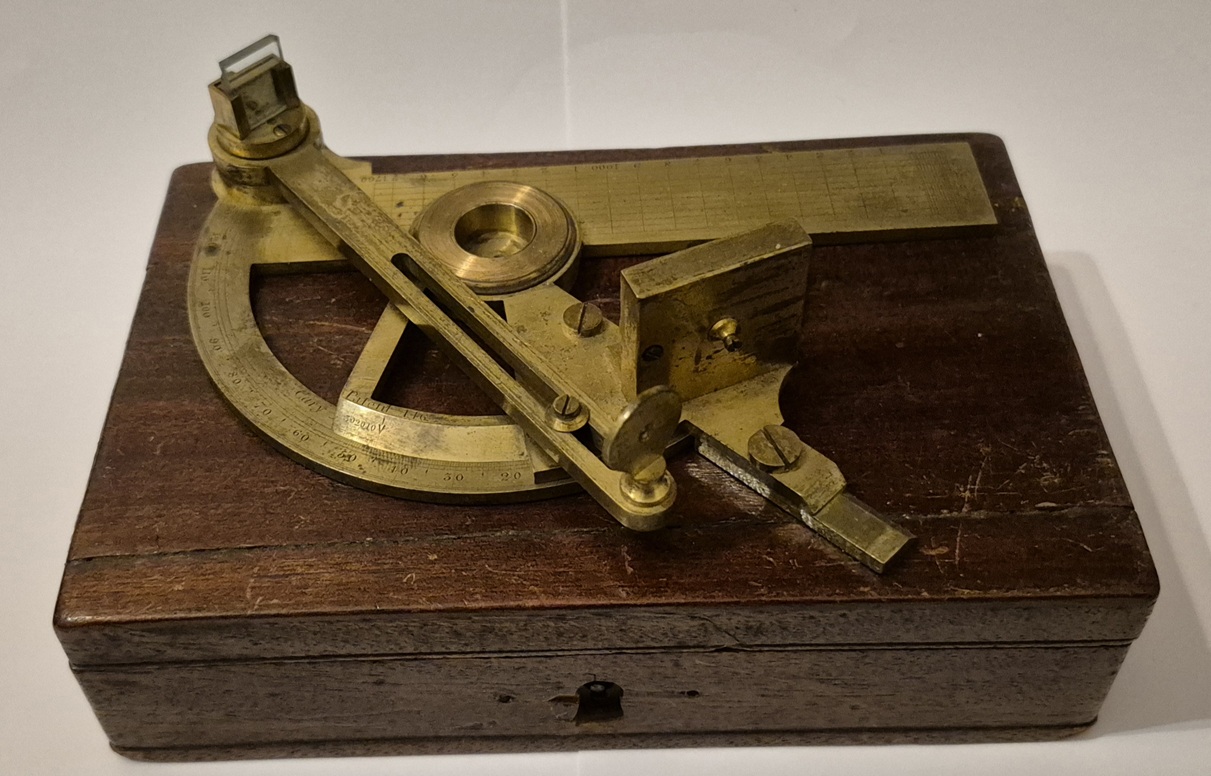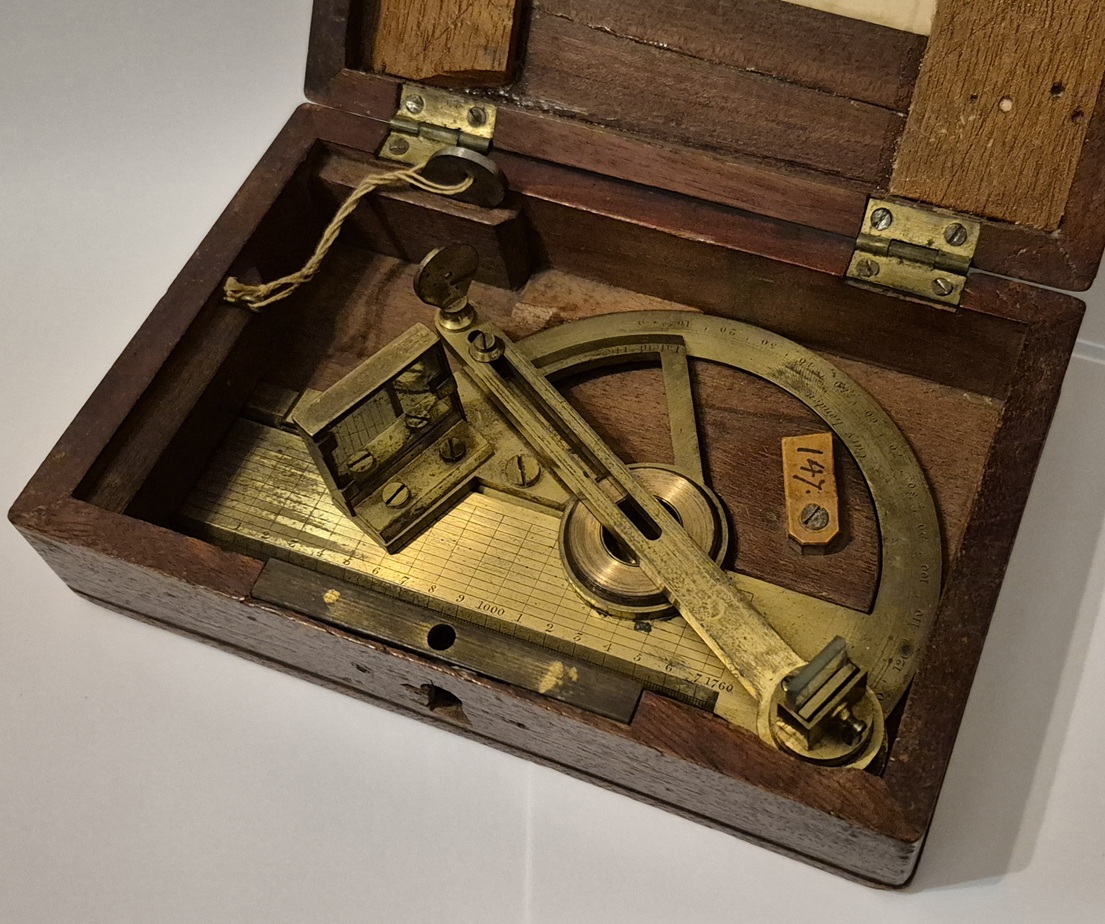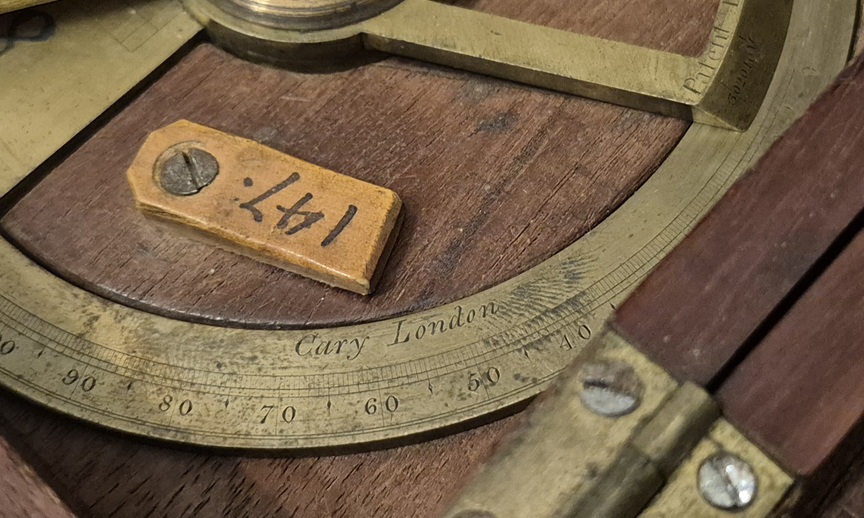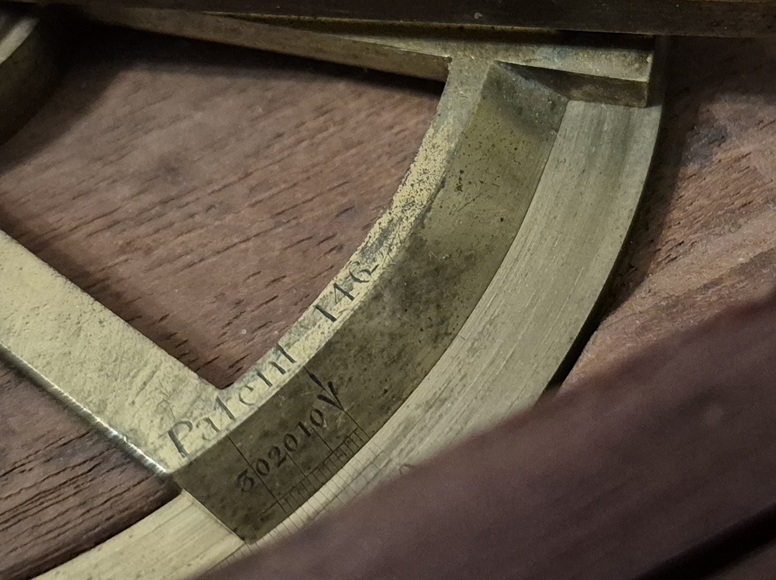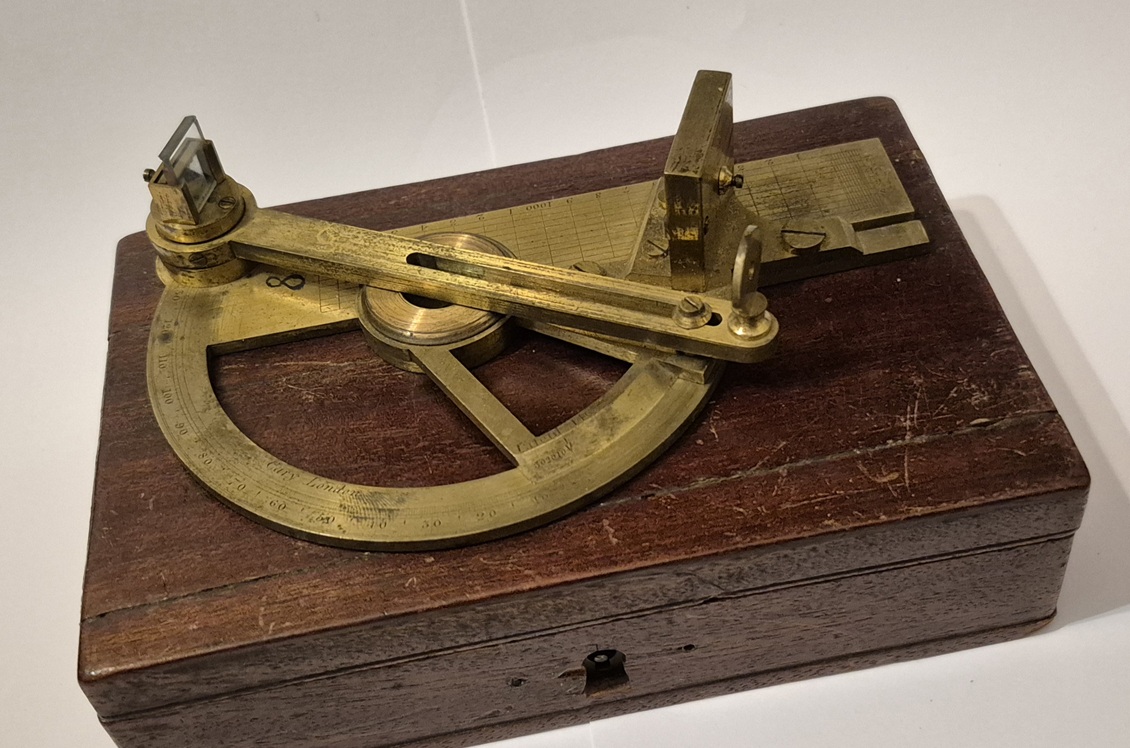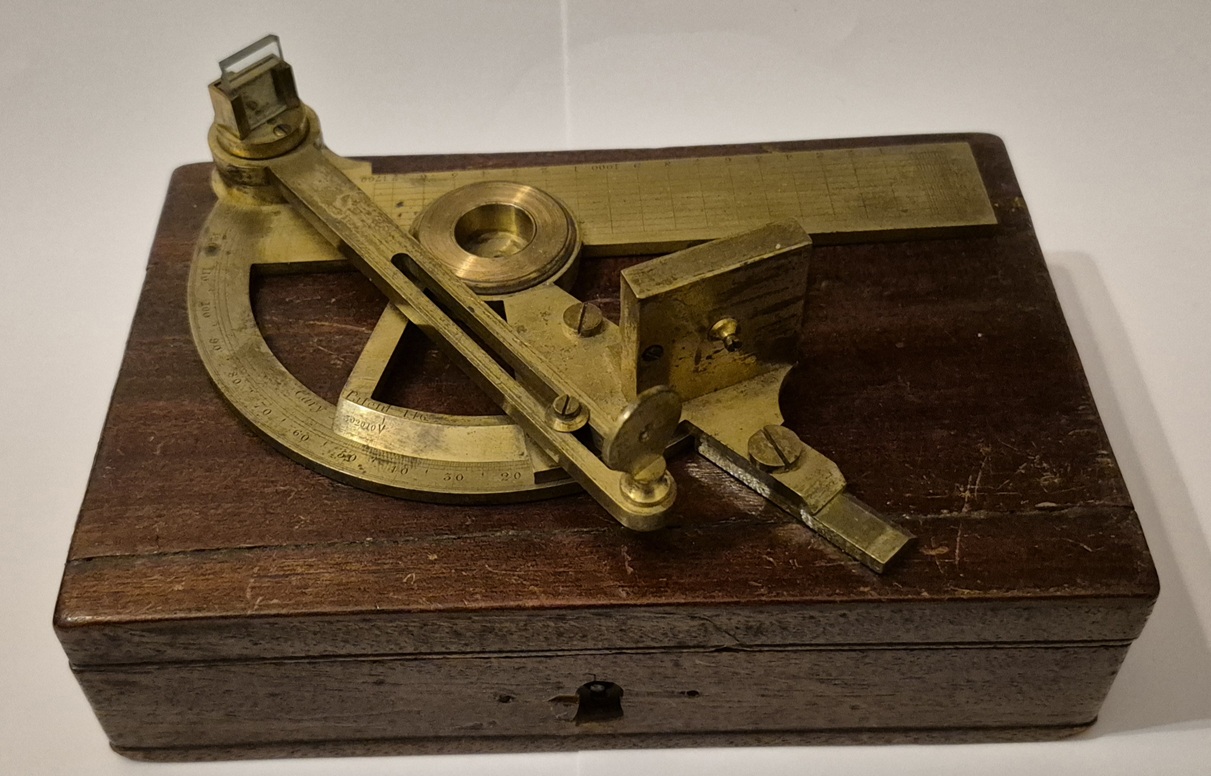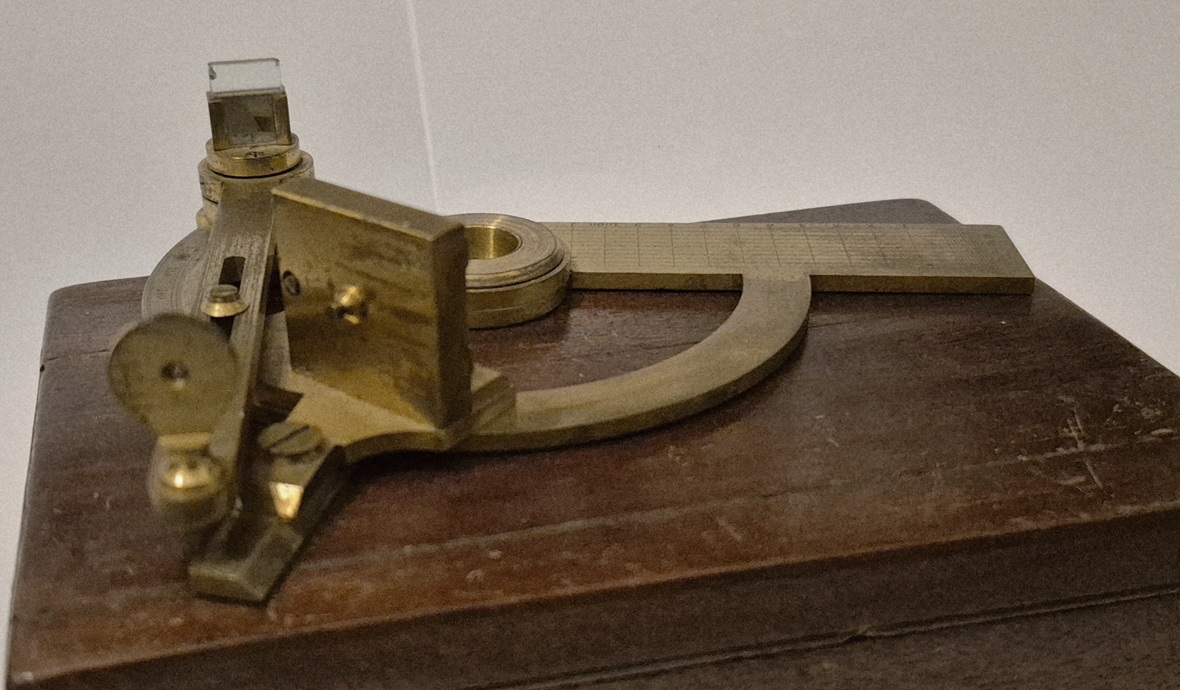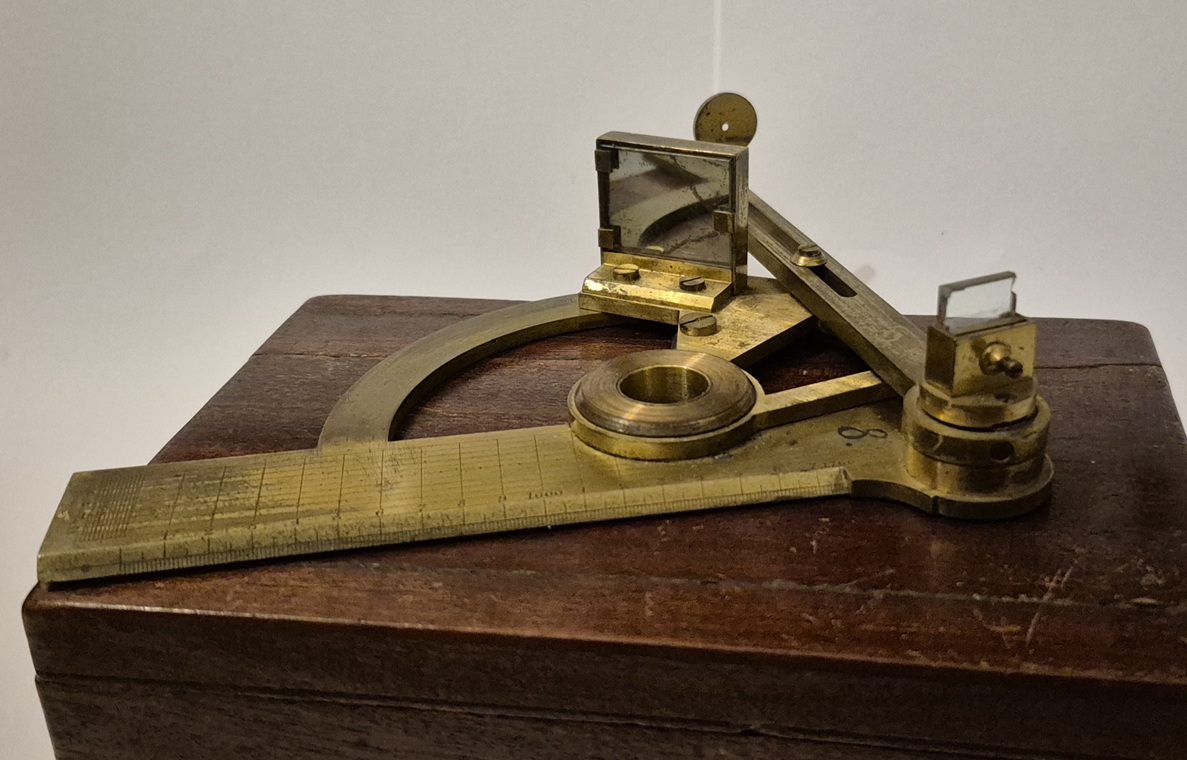Description
A very fine and early example of teh Howard Douglas’s reflecting or optical protractor by Cary which is a pocket sextant or a pocket instrument for chart making and coastal hydrography.
The present example is in very fine condition with its original case, singed and its mirros in working order. The present example bears also the inscription “Patent 146”.
The instrument measures 14,5x9cm and the case 16,5×10,5×4,3cm.
“Peter Ifland, Taking the Stars. (Newport News, 1998) p.134: Early in the nineteenth century, Cary of London produced a doubly reflecting instrument that quite properly could be called an optical protractor. “Patent 198″ was engraved on the index mirror mount, but the basic patent was by Sir Howard Douglas of The Royal Military College at Farnham. The doubly reflecting optical arrangement was identical to a Hadley quadrant, but the mechanical action was entirely different. As with a conventional sextant, one object was sighted directly through the horizon mirror and the index system rotated to bring the second object reflected in the index mirror to coincidence. The angle between the two objects could be read directly from the arc, or the instrument itself could be laid on a chart or map to plot the angle directly. The instrument was a unique design ideally suited for chart making and coastal hydrography.” (see here : https://catalogs.marinersmuseum.org/object/CL26322)
“The sextant has a semi-circular brass protractor and straight edge. There is no tangent or clamping screw. The base is a straight edge and is marked from 0 to 1760 and carries a diagonal scale to 1 yard. The sextant has no shades. Index- and horizon-glass adjustment is made by screws. The index glass is mounted on an arm that moves along the protractor and carries the vernier. The horizon glass and the sight vane are mounted at either end of a slotted index arm. The slot rides over a pin that is fixed to the arm of the index glass. The sextant is contained in a fitted leather case marked in ink, ‘G Talbot’.
The instrument has a brass scale from 0° to 130° by 30 arcminutes, measuring to 121°. The sextant has a brass vernier measuring to 1 arcminute, with zero at the right.
Sir Howard Douglas (1776-1861) designed this instrument (patent no. 3461 of 1811) for land and marine surveying, whereby the measured angle may be protracted in actual magnitude without reading off. Sir Howard, son of the equally inventive Admiral Sir Charles Douglas, was an army officer who studied navigation shortly before he designed this instrument, for which he was elected Fellow of the Royal Society in 1816.” (see here : https://www.rmg.co.uk/collections/objects/rmgc-object-42352).
Ask the Dealer
Dealer information
 Le Zograscope
Le Zograscope
Established by Alexandre Piffault in 2014 and based in Paris at 5 rue de Condé, 75006, very close to Odéon, Le Zograscope specializes in antique and rare books in Science, Medicine and Technology, and rare antique instruments in the same fields. We have especially a strong interest in early and continental microscopy, early and special mathematical/drawing instruments, medical and surgical instrument, and rare technology.
Personnal website : https://www.lezograscope.com/



